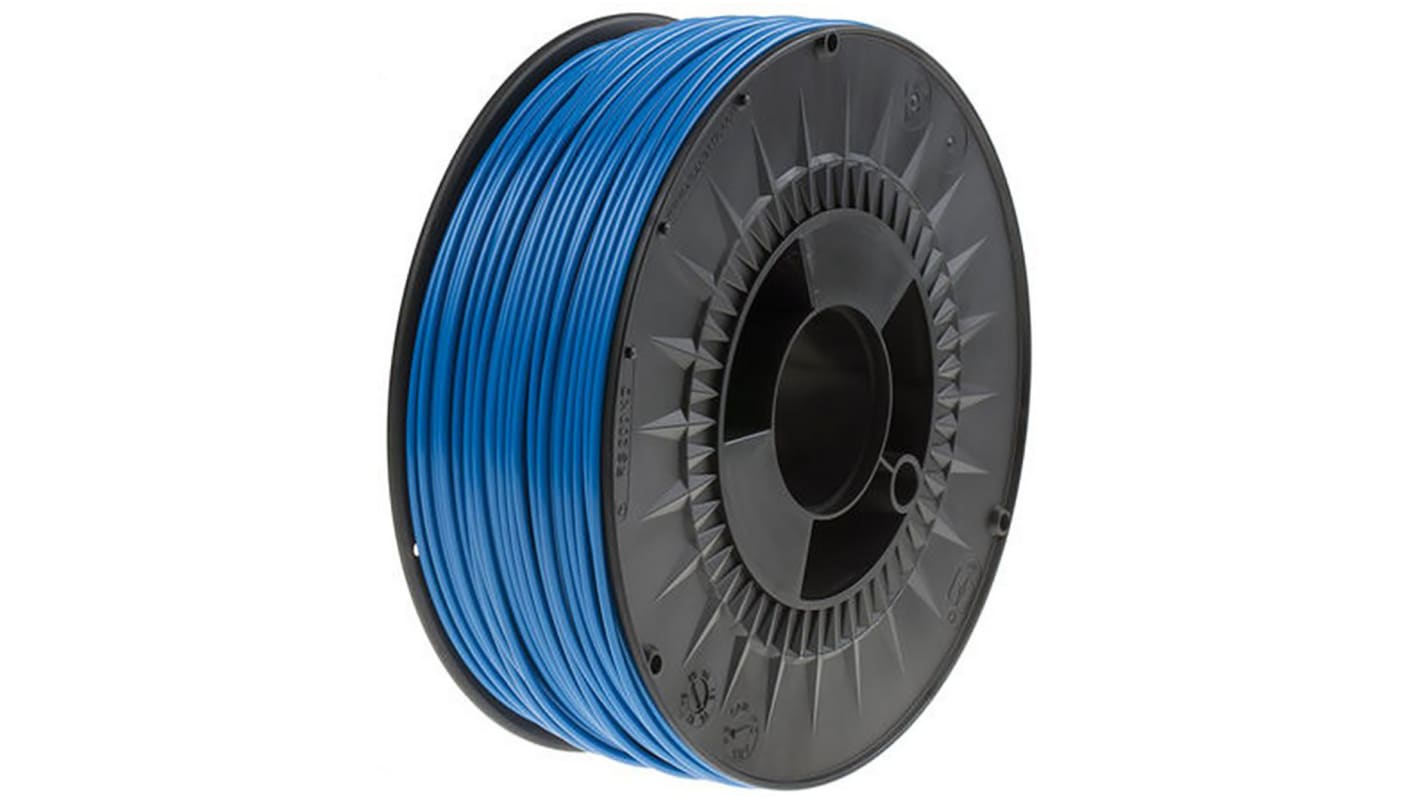RS PRO 2.85mm Blue PLA 3D Printer Filament, 2.3kg
- RS庫存編號:
- 125-4340
- 製造商:
- RS PRO
可享批量折扣
單價 个
HK$679.50
22 現貨庫存,可於3工作日發貨。*
* 交貨日期可能會根據您選擇的數量和交貨地址而變更。
訂單金額滿 HK$850.00 即可享受 免費 送貨服務
單位 | 每單位 |
|---|---|
| 1 - 4 | HK$679.50 |
| 5 + | HK$559.20 |
- RS庫存編號:
- 125-4340
- 製造商:
- RS PRO
- COO (Country of Origin):
- ES
RS PRO 3D Printer Filament PLA 2.85 mm 2.3 Kg
Poly Lactic Acid (PLA) is a plastic made from renewable natural resources and one of the most popular materials for 3D printing. Plastics such as PLA are the most popular 3D printing material due to its simplicity, dimensional accuracy and low cost. PLA can be printed at a low temperature and does not require a heated bed and is one of the most environmentally friendly filaments available.
PLA is a tough, easy to use high-grade PLA type of filament, ideal for 3D printing. Slightly modified, the filament retains the typical features of PLA but makes it tougher and less brittle. Due to a low shrinkage factor, PLA will not deform after cooling.
This RS Pro range of PLA 3D printing material comes in various colours:
125-4336 - Black
125-4338 - White
125-4340 - Blue
125-4342 - Red
125-4344 - Silver
PLA is a tough, easy to use high-grade PLA type of filament, ideal for 3D printing. Slightly modified, the filament retains the typical features of PLA but makes it tougher and less brittle. Due to a low shrinkage factor, PLA will not deform after cooling.
This RS Pro range of PLA 3D printing material comes in various colours:
125-4336 - Black
125-4338 - White
125-4340 - Blue
125-4342 - Red
125-4344 - Silver
Features and Benefits
• Tougher and less brittle compared to regular PLA
• Easy to print at low temperature
• Low warping
• PLA is derived from crops such as corn and sugar cane
• Limited smell
• Good shelf life
It is important to store the filament correctly to maintain its quality. Over time the plastic will absorb moisture from the air, creating small water bubbles in the filament. These bubbles when heated in the extruder nozzle quickly reach boiling point, spoiling the print. The use of desiccant dehumidifiers to absorb the moisture is highly recommended
Storage
Cool and dry (15-25˚C) and away from UV light. Enhances the shelf life significantly
• Tougher and less brittle compared to regular PLA
• Easy to print at low temperature
• Low warping
• PLA is derived from crops such as corn and sugar cane
• Limited smell
• Good shelf life
It is important to store the filament correctly to maintain its quality. Over time the plastic will absorb moisture from the air, creating small water bubbles in the filament. These bubbles when heated in the extruder nozzle quickly reach boiling point, spoiling the print. The use of desiccant dehumidifiers to absorb the moisture is highly recommended
Storage
Cool and dry (15-25˚C) and away from UV light. Enhances the shelf life significantly
Typical Applications
PLA in 3D printing is used in a wide range of applications such as:
• General printing
• Hobbyist
• Medical
• Education
• Prototyping
• Jewellery
• Architecture models
• Aviation
• Engineering
• Automotive
FAQs
What material can be used in 3D Printing?
Various materials can be used for 3D printing which includes:
PLA, ABS plastic, polyamide (nylon), glass filled polyamide, stereolithography materials (epoxy resins), silver, titanium, steel, wax, photopolymers and polycarbonate.
What is the least expensive 3D printing material?
PLA and ABS are the least expensive
PLA in 3D printing is used in a wide range of applications such as:
• General printing
• Hobbyist
• Medical
• Education
• Prototyping
• Jewellery
• Architecture models
• Aviation
• Engineering
• Automotive
FAQs
What material can be used in 3D Printing?
Various materials can be used for 3D printing which includes:
PLA, ABS plastic, polyamide (nylon), glass filled polyamide, stereolithography materials (epoxy resins), silver, titanium, steel, wax, photopolymers and polycarbonate.
What is the least expensive 3D printing material?
PLA and ABS are the least expensive
Note
Due to its low tendency to warp PLA can also be printed without a heated bed. With a heated bed, the recommended temperature is ± 35-60˚C.
PLA can be used on all common desktop FDM or FFF technology 3D printers.
PLA can be used on all common desktop FDM or FFF technology 3D printers.
Attribute | Value |
|---|---|
| Material Type | PLA |
| Printing Technology | FDM |
| Machine Specific | No |
| Colour | Blue |
| For Use With | Common Desktop 3D Printers |
| Weight | 2.3kg |
| Diameter | 2.85mm |
| Printing Material | PLA |

